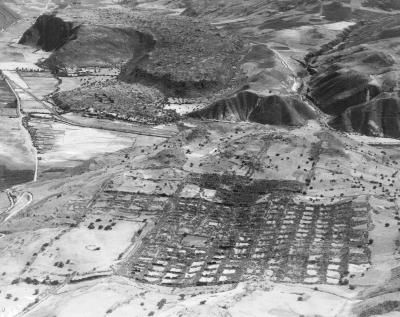
The Wari, an ancestor culture to the Incas that flourished throughout the Andean Highlands, expanded their reign largely through trade and semiautonomous colonies, rather than through the iron fist of conquest and centralized control, new research suggests.
To reach that conclusion, detailed this month in the Journal of Anthropological Archaeology, researchers looked at the settlement patterns of the pre-Columbian culture.
The Wari seemed to use a lighter touch when governing than leaders of the Inca Empire that rose to prominence around the 15th century. [Photos: Tracing the Incan Empire]
"The identification of limited Wari state power encourages a focus on colonization practices rather than an interpretation of strong provincial rule," said study lead author R. Alan Covey, an anthropologist at Dartmouth College in New Hampshire. "A 'colonization first' interpretation of early Wari expansion encourages the reconsideration of motivations for expansion, shifting from military conquest and economic exploitation of subject populations to issues such as demographic relief and strategic expansion of trade routes or natural resource access."
From their central city of Pikillacta, the Wari ruled much of present-day Peru between A.D. 600 and 1000. Though the ancient culture left no documents, thousands of archaeological sites, including untouched royal tombs, around Peru's Cusco Valley reveal much about their lives.
Covey and his colleagues used archaeological surveys and geographic mapping to systematically analyze the land-use practices of the Wari across 1,000 square miles (2,600 square kilometers) at about 3,000 archaeological sites.
The team found that, rather than radiating out in a continuous circle from Pikillacta, a huge city with massive investment, the Wari area of rule was patchier. Ceramics from many of the sites show the Wari cultural influence was often limited and indirect.
Sign up for the Live Science daily newsletter now
Get the world’s most fascinating discoveries delivered straight to your inbox.
The findings suggest the Wari, unlike their descendants the Incas, weren't quite able to bring colonies directly under their rule.
Instead, the Wari likely expanded when trade routes opened or when they needed access to specific natural resources, the study suggests.
Follow Tia Ghose on Twitter and Google+. Follow LiveScience @livescience, Facebook & Google+. Original article on LiveScience.

Tia is the managing editor and was previously a senior writer for Live Science. Her work has appeared in Scientific American, Wired.com and other outlets. She holds a master's degree in bioengineering from the University of Washington, a graduate certificate in science writing from UC Santa Cruz and a bachelor's degree in mechanical engineering from the University of Texas at Austin. Tia was part of a team at the Milwaukee Journal Sentinel that published the Empty Cradles series on preterm births, which won multiple awards, including the 2012 Casey Medal for Meritorious Journalism.












